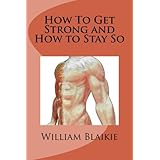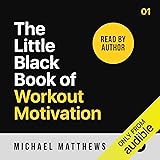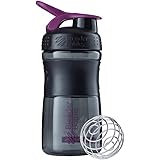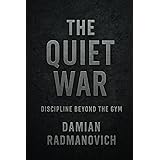Unlock Your Potential: The Ultimate Fat Burning Gym Routine Combining Supersets & Interval Training
Ever felt stuck in a fitness plateau, yearning for a workout that truly ignites your metabolism and carves out lean muscle? You’re not alone. Many dedicated gym-goers often hit a wall, needing a fresh, dynamic approach to push past stagnant results. The video above offers an incredible blueprint for a highly efficient, hour-long session designed to supercharge your fat burning potential. This comprehensive guide delves deeper into the methodologies, benefits, and execution of this powerful fat burning gym routine, ensuring you maximize every minute in the gym.
The Science of Accelerated Fat Loss: Why This Routine Works
This dynamic workout synergistically combines superset strength training with high-intensity cardio intervals. This isn’t just a random assortment of exercises; it’s a meticulously crafted system built on principles of metabolic conditioning. Superset training, where two exercises are performed back-to-back with minimal rest, keeps your heart rate elevated, boosting caloric expenditure during and after your session—a phenomenon known as EPOC (Excess Post-exercise Oxygen Consumption), or the “afterburn effect.”
Furthermore, incorporating compound movements in your supersets means you’re engaging multiple muscle groups simultaneously. This demands more energy, leading to greater strength gains and increased lean muscle mass. More muscle mass inherently translates to a higher resting metabolic rate, making your body a more efficient fat-burning machine even when at rest. Integrating treadmill interval running, whether incline-based or speed-focused, further amplifies this metabolic boost, improving cardiovascular health and endurance while incinerating calories.
Pre-Workout Protocol: The Indispensable Warm-Up
Before diving into any strenuous fat loss gym routine, a thorough warm-up is non-negotiable. As highlighted in the video, dedicating 5 to 10 minutes to prepare your body is crucial. This isn’t merely about preventing injury; it’s about optimizing performance. A proper warm-up increases blood flow to working muscles, improves joint lubrication, and activates the nervous system, priming your body for the demanding work ahead. Start with light cardio, gradually increasing intensity, ensuring your muscles are supple and ready for activation.
Deconstructing the Superset Circuits for Maximum Impact
The core of this fat burning workout lies in its strategically paired supersets, each targeting key muscle groups while maintaining a high intensity. Each exercise within a superset is performed for 45 seconds, followed by a brief 15-second rest, before immediately transitioning to the next exercise. This continuous eight-interval cycle ensures sustained heart rate elevation and significant muscle fatigue, crucial for hypertrophy and metabolic conditioning.
Circuit 1: Lower Body Power & Core Stability
This circuit targets the largest muscle groups in your body, primarily focusing on the legs and core. Maximizing engagement here ensures a high caloric burn and foundational strength.
- Goblet Squats: This compound movement is a phenomenal full-body exercise, emphasizing the quadriceps, hamstrings, glutes, and core. Holding a dumbbell at your chest (the video’s demonstrator uses 16 kg, a solid starting point for many), ensures an upright posture. Crucially, focus on pushing through your heels on the ascent, keeping your back straight and chest open. This minimizes strain on the lumbar spine and effectively engages the posterior chain.
- In-and-Out Jumps: A plyometric powerhouse, this exercise demands explosive power and agility. Starting from a sumo squat, jumping in and out rapidly maintains the lower body burn initiated by the goblet squats. The emphasis on touching the floor during the squat ensures depth and engagement of the glutes and inner thighs, while the rapid movement elevates your heart rate considerably.
Cardio Interval: The Incline Challenge (4 Minutes)
Following your first strength circuit, it’s straight to the treadmill for a challenging incline interval. This isn’t just running; it’s climbing. Increasing the gradient progressively (0%, 3%, 6%, 9% each minute) mimics uphill running, which significantly activates the glutes and hamstrings more than flat running. This higher muscle recruitment means a greater calorie expenditure, even if your speed is slightly reduced. Maintaining your speed at higher inclines dramatically increases the intensity and cardiovascular demand, forcing your legs to work harder and building incredible endurance.
Circuit 2: Upper Body Strength & Core Integration
This superset focuses on developing a strong back and powerful chest, vital for overall upper body aesthetics and functional strength.
- Bent-Over Row & Deadlift: This combination, using moderately heavy dumbbells (6-10 kg per hand as suggested), works the entire posterior chain. The bent-over row targets the lats and rhomboids, while the subsequent slight arch and straighten targets the erector spinae, crucial for lower back health. Maintain soft knees and a bent waist, pulling the dumbbells towards your belly while squeezing your back muscles.
- Push-up and Twist: A dynamic take on the classic push-up, this variation adds an anti-rotational core component. After a standard push-up, you twist your torso to one side, extending an arm towards the ceiling. This not only builds chest and triceps strength but also engages the obliques and transverse abdominis to stabilize the body, enhancing core power and balance.
Cardio Interval: The Speed Burst (4 Minutes)
After the second strength block, you’re back on the treadmill, this time for speed intervals. This High-Intensity Interval Training (HIIT) approach involves alternating between maximum effort sprints and active recovery periods (slow jog or walk). The structure—1 minute sprint, 1 minute recovery, 1 minute sprint, 1 minute recovery—is highly effective for improving anaerobic capacity, boosting cardiovascular fitness, and triggering a robust EPOC response. Pushing your fastest speed during the sprints signals your body to burn more calories both during and after the workout.
Circuit 3: Shoulder & Arm Definition
This circuit hones in on sculpting your shoulders and arms, ensuring balanced upper body development.
- Bicep Curls to Shoulder Press: This is a compound movement for the arms and shoulders, making it highly efficient. Starting with lighter dumbbells (3-5 kg per hand) allows for strict form. The curl engages the biceps, while the twist and press target all three heads of the deltoids. Avoid swinging; controlled, deliberate movements ensure maximum muscle activation.
- Elevated Bench Dips: A fantastic bodyweight exercise for the triceps, chest, and shoulders. Elevating your feet increases the difficulty, adding more resistance. Keep your elbows close to your sides and lower your body until your elbows reach a 90-degree angle. This ensures the triceps are fully engaged, providing a powerful pump.
Cardio Interval: Repeat Incline Challenge (4 Minutes)
The repetition of incline interval running after your third strength block serves a specific purpose: to maintain intensity and further exploit the benefits of incline work. Even if your pace is slower due to fatigue, the increased muscle activation and cardiovascular demand of uphill running continue to torch calories and build endurance. This strategic repetition reinforces the metabolic benefits of the routine.
Circuit 4: Killer Core Activation
The final strength superset zeroes in on the core, essential for all movements and for a strong, stable physique.
- Half V-Tucks: This exercise targets the lower abs, a notoriously challenging area. By keeping your legs straight and lifting them off the ground, you create constant tension on the lower rectus abdominis. Controlled lowering is key to maximizing engagement and preventing reliance on momentum.
- Spiderman Plank: A dynamic plank variation that challenges core stability, oblique strength, and hip mobility. From a high plank position, bringing your knee towards your elbow engages the obliques and external hip flexors, demanding significant anti-rotational stability.
Final Cardio Push: Speed Intervals (4 Minutes)
To cap off this intense session, another round of speed interval running provides a powerful metabolic finish. This final push ensures your body is operating at peak intensity, further boosting EPOC and cementing the fat-burning effects of the entire workout. Pushing your sprint threshold at this fatigued state is a mental and physical challenge that yields significant results.
Post-Workout Protocol: The Essential Cool-Down
Just as vital as the warm-up, a 10-minute cool-down period is critical for recovery and flexibility. Light stretching helps improve range of motion, reduce muscle soreness, and gradually bring your heart rate and nervous system back to a resting state. Focus on stretching the major muscle groups worked during the session, holding each stretch for 20-30 seconds.
Optimizing Your Fat Burning Gym Routine for Continuous Results
This routine is designed for progressive overload. As you get stronger, consistently challenge your muscles by increasing the weight, reps, or decreasing rest times. Pay close attention to your body’s signals and maintain proper form to prevent injury and maximize muscle activation. For optimal results, integrate this structured fat burning gym routine 2 to 3 times weekly on alternate days, allowing your muscles adequate time to recover and grow. Remember, consistency is paramount. Couple this intense training with a balanced nutritional approach and sufficient rest, and you’ll unlock unparalleled progress in your fat loss and muscle building journey.











